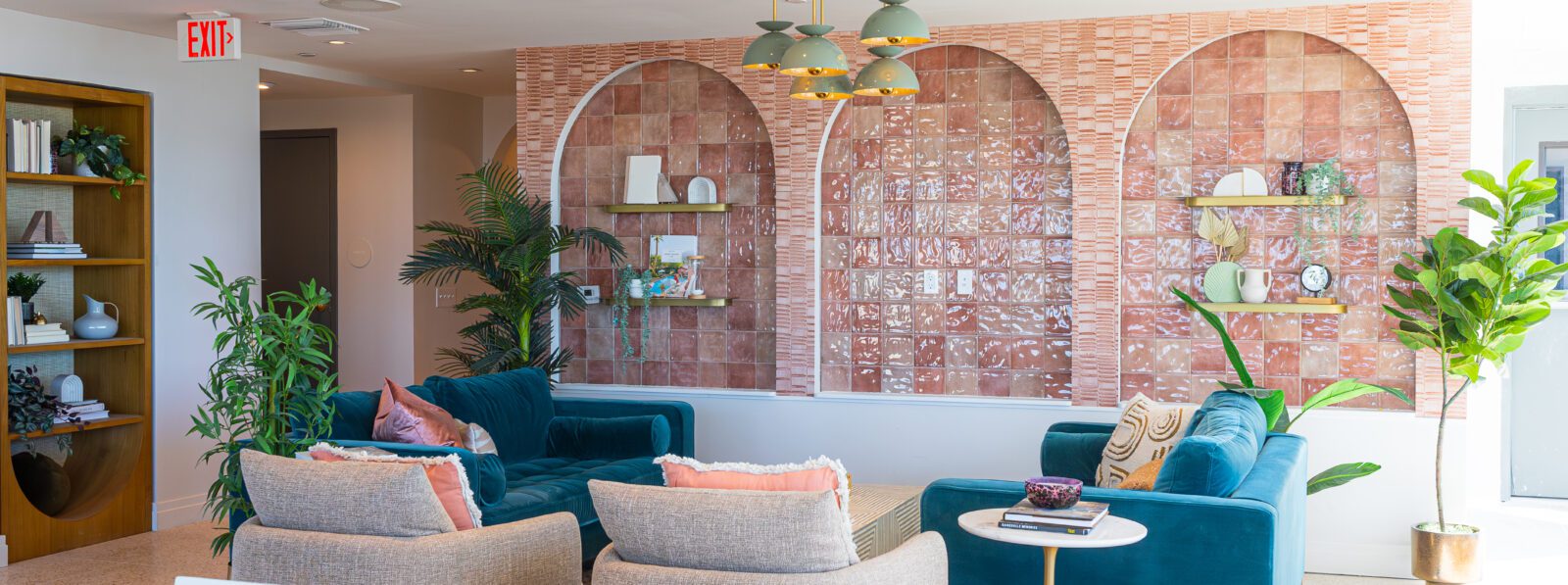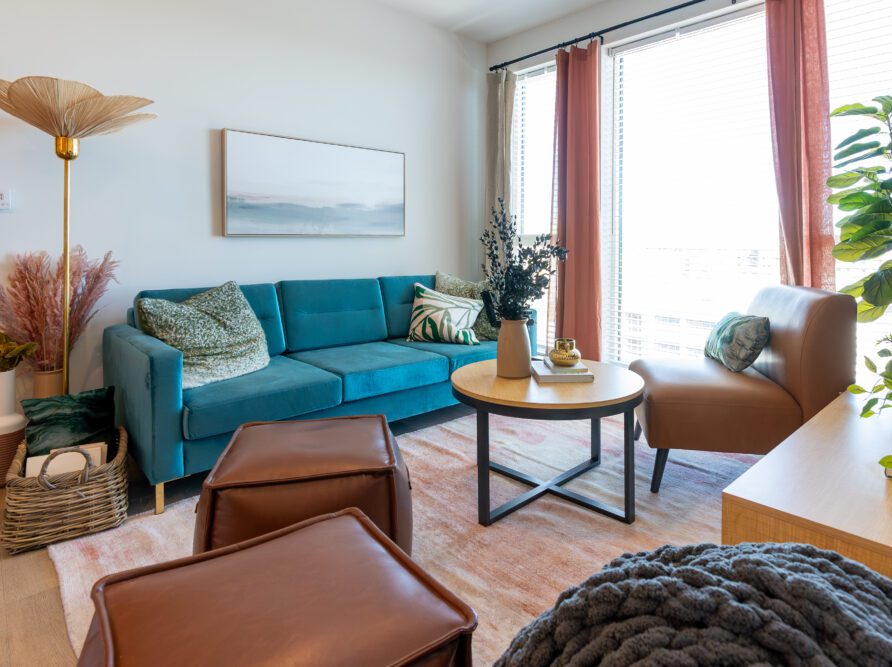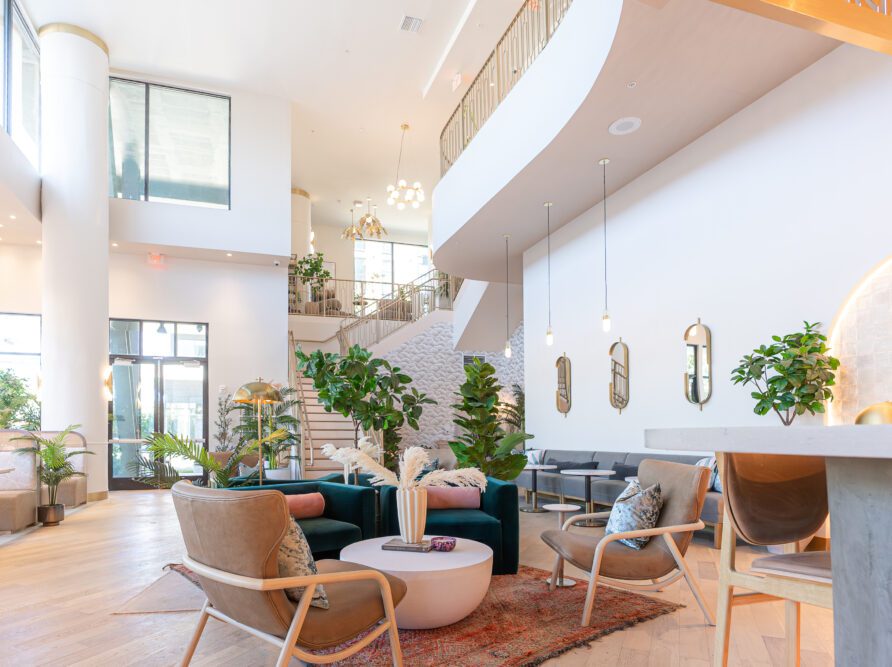College is expensive and trying to budget for daily life while also paying for housing and tuition can be stressful. One of the most difficult aspects is trying to find the most cost-effective living situation that meets all of your wants and needs.
At Sweetwater, the most common questions we get asked are about pricing, specifically how much it costs to live near the UF campus.
While we wish there was one answer, the cost of living around campus actually varies greatly depending on proximity to campus, amenities offered, and what type of housing you’re looking at.
If you’re looking at living across the street from the edge of campus, rent typically ranges from around $600 to $3,000 per month.
To help you better understand the cost of living near UF, we have compiled all of the important information regarding the cost of housing, including:
- How student housing apartments calculate rental rates
- Which factors affect the price of monthly rental rates
- Other fees to consider on top of monthly rental rate
How Much Does it Cost to Live Near the UF Campus?
How Student Housing Apartments Calculate the Rate of Rent
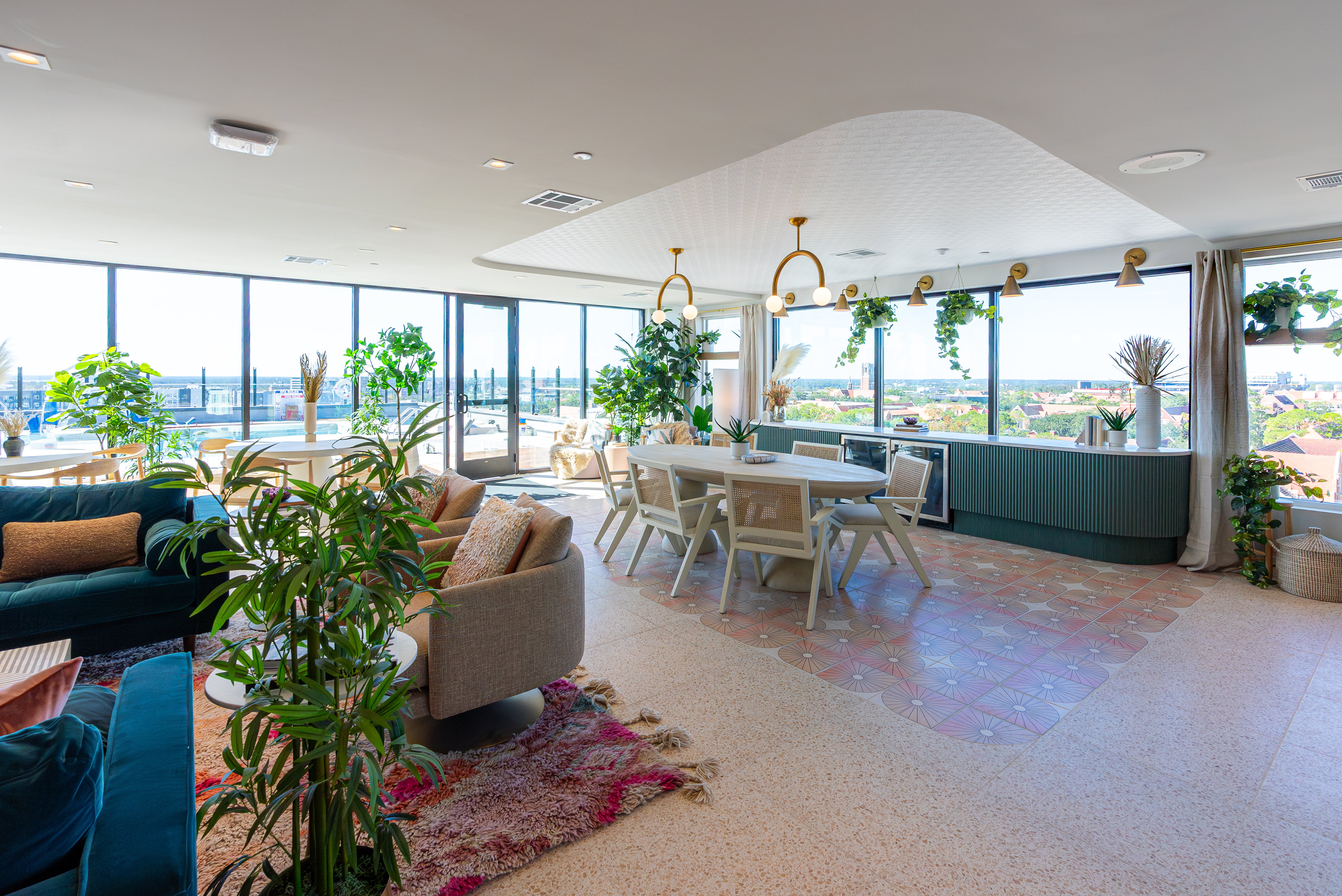
Sweetwater’s club room opens up to the rooftop pool that overlooks UF campus.
Before getting into specifics about cost, it’s important to know how rental rates are calculated so you can better understand what you are paying for.
Student housing apartments will have different rental rates than houses and traditional apartments because they were built intentionally for students, so they offer amenities and floor plans that are more specific to a student’s lifestyle.
In a house or traditional apartment complex, you and your roommates are usually required to sign one lease for the entire unit. So, you’ll be charged one lump sum rate each month, and you and your roommates are responsible for dividing the rent up amongst yourselves.
With student housing, leases are done by bed, not unit. This means that each roommate signs an individual lease and agrees to be responsible for their room, bathroom, and shared spaces.
Read Next: How to Sign a Lease at an Apartment near UF
When looking at your student housing options, it’s important to know if the rental rate listed in the lease is per bed or for the entire apartment or house.
It’s also important to understand how long of a lease you’re required to sign.
Most student housing apartments in Gainesville offer a 12-month lease, beginning in August and ending the following July. Many UF students stay in Gainesville over the summer, either taking classes or working, but if you don’t plan on staying over the summer, most apartments allow you to sublease your room for the summer semester.
On-campus housing (dorms) offers a nine-month lease, including the Fall and Spring semesters, so if you plan on staying in Gainesville after the Spring semester, you will have to find different housing for summer. Additionally, on-campus housing closes over winter break, so you will not be able to stay in your dorm during that time either.
Factors That Affect the Price of Monthly Rental Rates
After reading about how student housing apartments calculate rental rates, you can probably see that there are many factors that impact rental rates. The main factors that affect the price of monthly rental rates are housing type, floor plans, building age, and room features.
1. Housing Type
When looking at the different housing types available in Gainesville, most students are looking for a place that accommodates their student lifestyle, making it easy to attend classes while also maintaining a fun social life. This typically means students want to live with their friends close to campus.
For undergraduate students at UF, the most popular types of housing are:
- Dorms
- Student housing apartments
- Greek (sorority and fraternity) houses
- Traditional apartments
- Traditional houses
Read Next: What types of housing are available for UF students?
Usually, the more amenities offered at a complex (fitness centers, study lounges, pools, etc.), the more expensive the rental rate will be.
Dorms
-

Dorm rooms can have different layout options. Photo courtesy of UF Housing.
Dorms, formally known as residence halls, are the on-campus living option for students at UF. Typically, only freshmen live in dorms because it’s an easy way to transition to college, but not all freshmen choose to do so.
There are many different dorm options at UF, and when choosing which dorm students want to live in, many students base their decision on the dorm rental rate. Dorms primarily vary in cost based on location and room type.
At the time of publication in February 2025, dorm rates range from around $3,100 to over $5,000 per semester. For more information on dorm rental rates, you can visit the UF Housing and Residence Life website.
To make the rental rates easier to compare to an apartment rate, we calculated the cost of what a monthly dorm rate would be, even though they are only listed as semesterly rates. For the least expensive dorm, the rental rate would be about $700 per month and the most expensive dorm would be about $1,111. As you can see, the rates vary greatly depending on which dorm you select.
At UF, dorms are offered as nine-month contracts, aligning with the Fall and Spring semesters. Dorms close over school breaks, so if you need to be in Gainesville over winter break, you will have to find an alternative living option.
Dorm rates at UF include room, internet service, and laundry. They come furnished, but furnishings are limited to a desk and chair, dresser, extra-long twin bed, closet space and shelving. Most halls have a communal kitchen and lounge where students can cook meals and hang out with friends.
Meal plans are not included in dorms. Meal plan options vary and cost is based on which plan you choose, ranging from $1,845 to $2,404 per semester, which equates to $3,690 to $4,808 for the year. To review all of the meal plan options, visit the UF Business Services website.
Student Housing Apartments
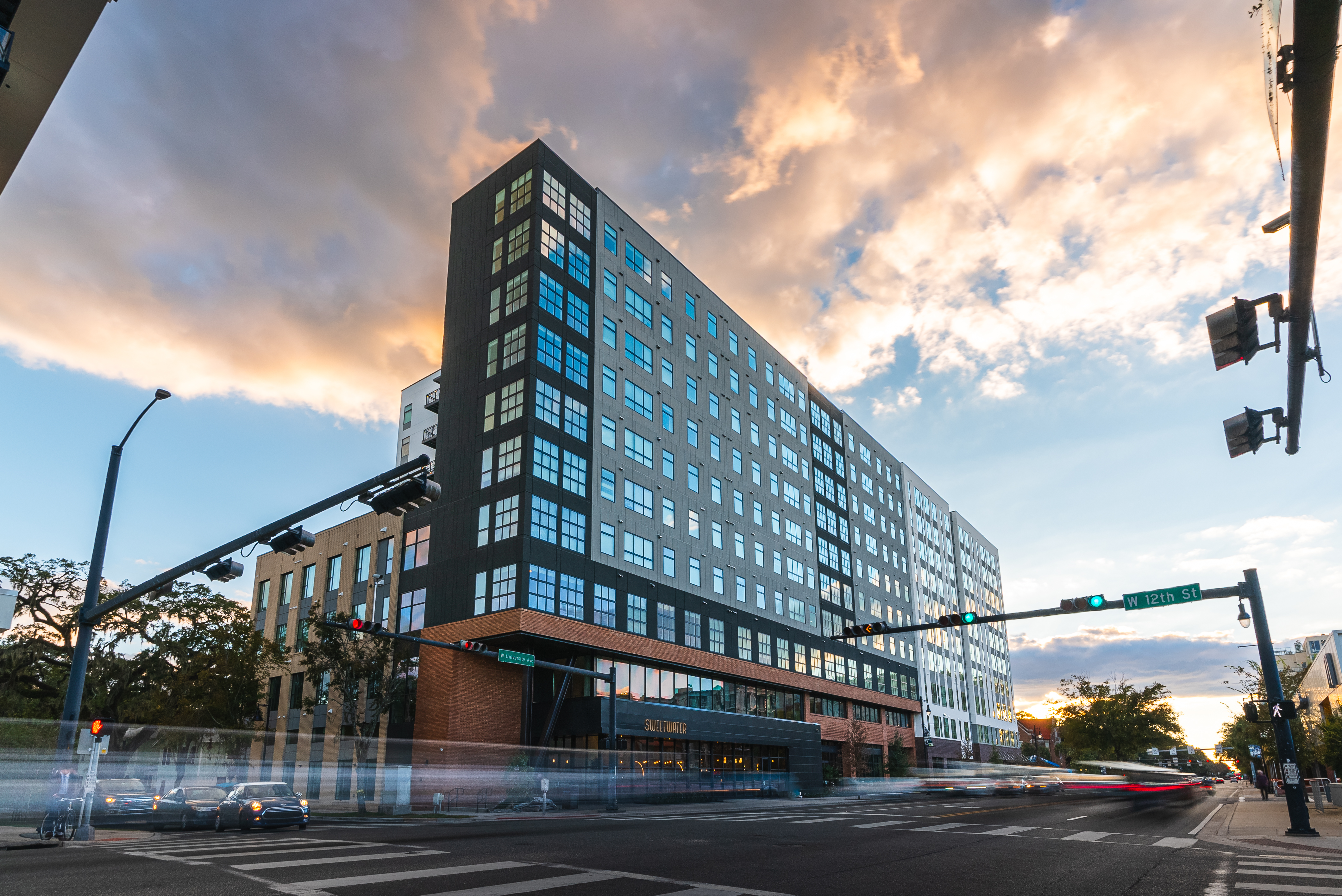
Sweetwater is located at 1225 W University Avenue, just one block from the UF campus.
The most popular off-campus housing option near the University of Florida are student housing apartments. Student housing apartments are different from traditional apartments because they are specifically built for students; they typically have study lounges and trendy entertainment spaces, among other amenities.
Read Next: 5 Best Student Apartments near the University of Florida
Student housing apartments are offered as year-long individual leases. This means that the apartment is leased by bed, not by unit, and each roommate signs their own individual lease that makes them responsible for their own room, bathroom and common spaces.
If you have trouble finding roommates, most student housing apartments have a roommate matching program where leasing staff members will match future tenants together. This feature is unique to student housing apartments and is especially helpful for transfer students who don’t necessarily know any UF students yet.
Most student housing apartments come fully furnished, but students tend to buy smaller kitchen appliances or bathroom accessories to make the apartment more suited for them.
Student housing apartments usually have more amenities than traditional apartments. Some common amenities include fitness centers, pools, study lounges and entertainment spaces.
Read Next: Top 6 Local Coffee Shops near UF
Student housing apartments can fall on either end of the price range, primarily depending on location. Apartments that are located closer to campus and/or closer to midtown are more expensive.
In general, student housing apartments range from about $700 to $3,000 per month per person.
Student housing apartments do not come with meal plans, so when budgeting for apartment living, make sure to factor in the cost of groceries or eating out.
Traditional Apartments
-

23West is located on NW 24th Ln. Photo courtesy of Apartments.com.
Another off-campus living option in Gainesville is traditional apartments. Traditional apartments tend to be most popular among upperclassmen who are not as interested in living close to campus.
Similar to student housing apartments, traditional apartments offer year-long leases. However, unlike student housing apartments, traditional apartments typically offer leases by unit, not by bed.
Traditional apartments are usually less expensive and more spacious than student housing apartments, but they usually offer fewer, less luxurious amenities and are located further from campus.
Depending on the apartment complex, proximity to campus, and year it was built, traditional apartments can range in price from $500 to $1,800 per person per month.
Greek Houses
-

Alpha Gamma Rho located on Museum Rd. Photo courtesy of UF IFC.
At UF, Greek life makes up for 15% of the student body, which equates to over 5,200 students. Students who join Greek life tend to want to live in their sorority or fraternity house at some point during their college career. Most commonly, students live in their Greek houses in their second year of school.
Greek houses are privately run and offer nine-month leases, with Greek houses closing over summers. Each Greek house has different rental rates and most Greek organizations will set up payment plans with their members if the standard payment schedule does not work for them.
Room styles vary depending on the house, but common room styles include singles, doubles and triples. Some houses have bedrooms with their own bathrooms while others have communal hall bathrooms.
Sorority and fraternity houses can range greatly in price, with sorority houses typically falling in the middle-end of the price range and fraternity houses falling on the low-mid end of the price range.
Traditional Houses
-

Off-campus house located on NW 17th St. Photo courtesy of ApartmentGuide.com.
The final housing option available for UF students is traditional houses. Traditional houses are a great housing option for students who do not want to live around hundreds of other students.
Students often rent houses located in neighborhoods behind Midtown, near sorority row, and both east and west of campus down University Avenue. Some houses are privately owned and others are owned by property management companies.
Traditional houses are a popular living option for upperclassmen and graduate students. Typically, traditional houses offer year-long, traditional leases. Most houses do not come with any amenities, and depending on the house, some are furnished and some are not, so furniture could be another cost to consider.
Houses typically fall on the low-mid end of the price range and can range from around $500 to $1,200 per month per person. Generally, houses closer to midtown and west of campus down University Avenue will fall on the higher end of this range, while houses near Sorority Row and east of campus down University Ave. will fall on the lower end.
2. Floor Plans
Once you’ve decided on your housing type preference, you’ll want to start considering who your roommates will be, and after that, you can begin to look at the floor plans offered at each property.
Generally, apartments or houses with shared rooms and/or bathrooms will be the cheapest, while apartments with individual rooms and bathrooms will be more expensive.
The total number of rooms and bathrooms in a floor plan can impact the rental rate, too. Spaces with four or five bedrooms will usually have a lower individual rate than a space with one or two bedrooms.
3. Building Age
Typically, newer buildings are more expensive. This trend is seen in student housing apartments, traditional apartments, Greek houses and traditional houses.
The age of a building is most seen in the amenities it offers. Newer developments offer more amenities that are more modern and luxurious, while older complexes will have smaller amenity packages.
4. Location
Location can have a significant impact on pricing as well. An older house near the edge of campus may still cost more than a new apartment further away.
Because location is so important, the apartments that are located closer to campus often fill up quicker than the apartment farther away, so if you’re looking to live close to campus, definitely start looking for apartments at the beginning of the semester.
Read Next: When to Start Looking for Student Housing at UF
5. Unit / Room Features
The room features offered in rooms and units can often influence the rental rate. While the number of bedrooms and bathrooms are the biggest factors in price, it’s also important to ask yourself the following questions:
- Is your unit furnished?
- Does the unit have a balcony?
- Do you have your own bathroom?
- Is your bathroom attached to your bedroom?
- Does your unit have a washer/dryer?
- What floor are you on?
- Are you on a corner unit with more windows?
Answering “yes” to any of the above questions will typically be associated with higher rental rates.
Read Next: 8 Ways to Save on Student Housing in Gainesville
Other Fees to Consider On Top of Monthly Rental Rate
Additional costs that are not typically included in rental rates but should definitely be factored into your monthly or yearly budget are:
- Parking
- Utilities
- Rental Insurance
- Trash
- Moving fees
- WiFi
- Cable TV
- Pet Fees
- Technology Packages
- Security Deposit
Most of these fees only apply to traditional or student housing apartment complexes, but some of them may apply to dorms and houses as well.
Read Next: 10 Additional Costs to Consider When Looking for a Student Apartment
We hope that this article explained the costs associated with living near UF and gave you a better idea of a typical monthly living budget for students.
To learn more about the cost to live at Sweetwater, located on University Avenue, visit our website or contact our leasing staff.
